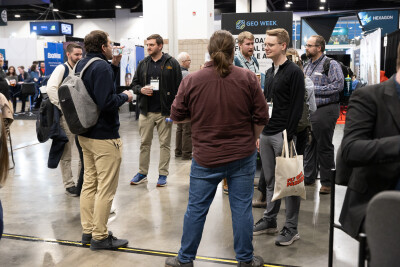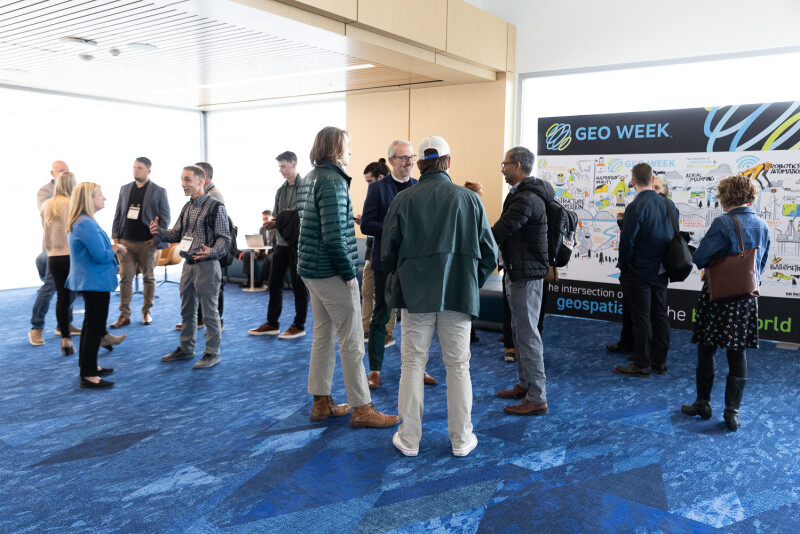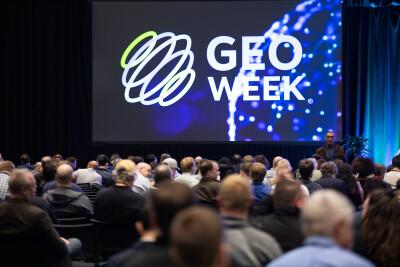It’s somehow already been three weeks since the close of Geo Week 2025, but we are still coming down from the excitement of the record-breaking three-day event and reflecting upon the conversations in which we took part and the presentations we watched. Immediately after the show, we published our three biggest takeaways from this year’s event, but that first one on the list continues to come back to my mind, particularly given everything happening with the federal government today. It goes without saying that technology is at the center of so much of what we cover here at Geo Week News and what is discussed and on display at Geo Week. The people, however, are still the drivers of the industry and will be for the foreseeable future.
This is not, to be clear, the start of an anti-technology screed. It’s actually quite the opposite. The technology that is coming out of the geospatial industry today is incredible, from improved hardware that allows us to capture crucial data in ways and with detail never seen before to software solutions that can efficiently process and analyze said data at rapid speeds. It’s undeniable that this industry wouldn’t be anywhere near where it is today – and where it needs to be – without these innovations. The crucial piece to remember, though, and the idea that was shared so many times throughout this year’s Geo Week event, is that the people are at the center of this innovation, both creating these new products and driving their usage.
Many of the discussions and presentations at Geo Week talked about this, but it was a presentation from Pete Kelsey of VCTO Labs LLC that really hammered home many of these points for me. The talk, which focused on a project in which the entirety of Alcatraz Island was captured, featured incredible storytelling and mind-blowing visualizations, but the real theme was collaboration and people. Kelsey made a point to explain that he was just one of many involved in this project, and took time to highlight the companies and people who worked together to complete the work. Many of these companies, as he pointed out, are competitors.

It’s this kind of collaboration that really becomes key in the industry today, as projects become more ambitious and workers are stretched thin. Today, it’s essentially impossible for companies to be experts in every area, meaning there needs to be some level of collaboration where different areas can be combined for a cohesive solution. That idea trickles down to people as well; companies need people with different areas of expertise to offer the most to their customers, and can’t rely on technologies as shortcuts.
Of course, any conversation like this will ultimately come back to artificial intelligence. Any time AI comes up in the context of basically any industry, the conversation will ultimately turn toward whether or not the tools will replace workers, and how exactly it will happen. Generally, creators of these tools will say that they are meant to support workers, not replace them. In the geospatial industry at least, there is plenty of truth to that given the shortage of workers and the massive amounts of data that are involved in this work, but it’s important to keep people front-of-mind moving forward.
Toward the top of this post, I also alluded to what’s happening with the federal government here in the United States, where departments in every corner of the government are being slashed and workers are being let go in droves. Without diving too much into the politics, I will simply say that there is a whole lot of geospatial expertise being shown the door. It’s hard to imagine there won’t be negative consequences for the federal government because of this, but the more positive spin is that private companies and local governments now have the most talented hiring pool available in recent memory. We hear all the time about how organizations throughout this industry need skilled and trained workers; this is an unprecedented opportunity to find just that.
I spend much of the year traveling to different events for geospatial professionals, and it always stands out how passionate this industry is. Often, that passion is directed toward technology, and for good reason. Even beyond its obvious utility, this stuff is just plain cool. But when conversations get most passionate and professionals really start to perk up is when they are talking about their colleagues, the people who make the industry go. It’s important, especially right now, to keep the people centered in this sector.






